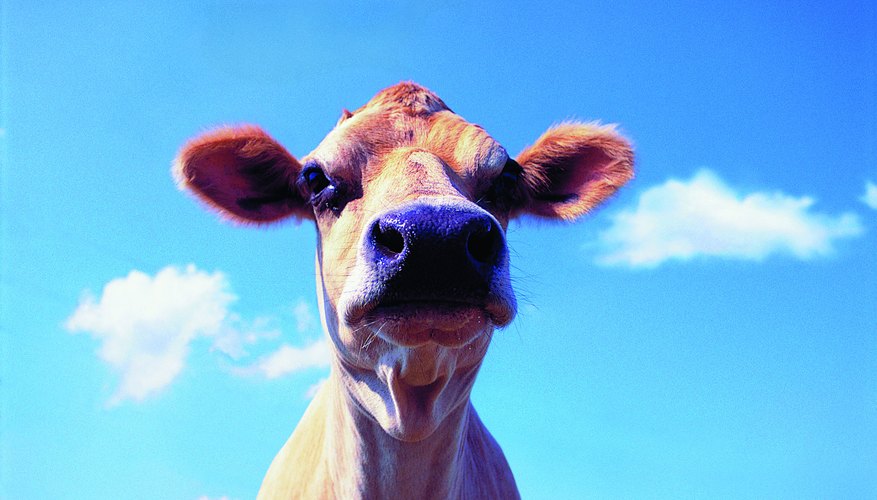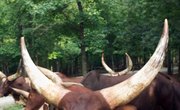
In the American dairy industry, the black and white Holstein cow is the dominant breed. However, while Jersey cows are far less numerous, they produce more milk per animal. If you're involved in a smaller dairy operation, Jersey cattle make good herd choices for a number of reasons, including a docile temperament and relative ease of maintenance.
Origins
The Jersey is named for its place of origin, Britain's Isle of Jersey in the English Channel. It's been a purebred animal for at least six centuries. Jerseys were imported to England on a large scale by the end of the 18th century.
Appearance
Jersey cows weigh between 800 and 1,200 pounds, while bulls weigh between 1,200 to 1,800 pounds. Most Jerseys are brown or a fawn shade, with a lighter abdomen. They also can come in shades of red, dark brown, gray or spotted, all with the lighter underside. Whatever the color, their muzzles generally are dark, as are the tails and flanks.
Milk
Of all major dairy breeds, the Jersey's milk boasts the richest content. The milk is very high in butterfat, which provides a better-tasting product. It's also used for making cheese and butter. According to the American Jersey Cattle Association (AJCA), compared to the average glass of milk, that produced by a Jersey contains 15 to 20 percent more protein, 15 to 18 percent more calcium and 10 to 12 percent more phosphorus, along with high amounts of vitamin B12.
Milk Production
Jersey cows are outstanding milk producers, producing more milk per each pound of body weight than other types of bovines. The record for milk production by one cow is held by a Jersey. The Jersey produces more milk on less feed than other dairy breeds, eating about 80 percent of a Holstein's normal daily intake.
Reproduction
Jersey cows are renowned for their ease of calving. According to the AJCA, the difficult birth rate for the breed is less than 1 percent. Heifers reach reproductive age earlier than other breeds, so can be bred and put into milk production months earlier than comparable dairy cows. Jersey cows have the longest productive life in the American dairy industry, generally about three years.
Adaptability
One reason the Jersey thrives around the world is its adaptability to various climates, especially hot ones. In tropical regions, Jerseys might be crossed with native cattle to improve milk production.
References
Writer Bio
Jane Meggitt has been a writer for more than 20 years. In addition to reporting for a major newspaper chain, she has been published in "Horse News," "Suburban Classic," "Hoof Beats," "Equine Journal" and other publications. She has a Bachelor of Arts in English from New York University and an Associate of Arts from the American Academy of Dramatics Arts, New York City.



